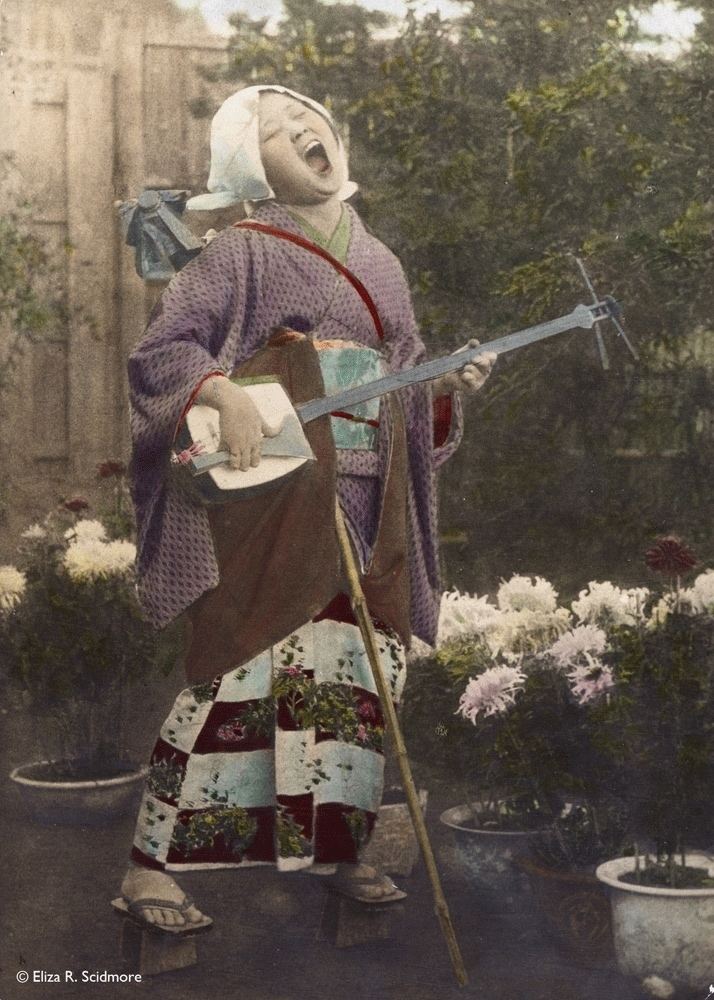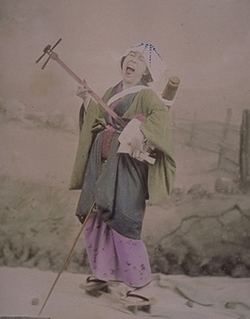 | ||
Emre salt k goze
Goze (瞽女) is a Japanese historic term referring to visually-impaired Japanese women, most of whom worked as musicians.
Contents
Christophe goze about us
Etymology

The ideographs for goze mean "blind" and "woman." The kanji are so because the individual ideograph for goze already existed. Goze is most likely derived from mekura gozen (盲御前), which also means "blind woman" (gozen is a formal second-person pronoun). Although the term goze can be found in medieval records, other terms such as mōjo (盲女), jomō (女盲) were also in use (especially in written records) until the modern era. In spoken language, the term goze is usually suffixed by an honorific: goze-san, goze-sa, goze-don, etc.
Organizations

From the Edo period (1600–1868), goze organized themselves in a number of ways. Few large-scale organizations have been found in urban areas, though during the nineteenth century some documents speak of a goze association in the city of Edo. In Osaka and some regional towns, goze were sometimes informally linked to pleasure quarters, where they were called to perform their songs at parties.

Goze organizations developed most in rural areas and continued to exist in Niigata (once known as Echigo) and Nagano prefectures well into the twentieth century (the last important active goze, Haru Kobayashi (小林ハル, Kobayashi Haru), died in 2005 at age 105).
From the Edo period onward, other goze groups were found from Kyushu in the south to the Yamagata and Fukushima prefectures in the north. Blind women farther north tended to become shamans (known as itako, waka, or miko) rather than goze. Large and important groups were especially active in the Kantō and surrounding areas, in what are today Gunma, Saitama, Chiba, Shizuoka, Yamanashi, and Tokyo-to. Other groups were formed in the Nagano and Gifu prefectures, and the Aichi prefecture farther south. In addition to the well-known groups of Niigata prefecture, groups existed in other areas along the western seaboard, including Toyama, Ishikawa, and Fukui prefectures.
Suzuki Shōei (1996 and elsewhere) divides the organizations of Echigo goze into three main types:

Rules

Goze organizations existed to allow blind women a degree of independence in pursuing their careers as musicians (or in some cases, massage). The rules that governed Echigo goze were said to have been decreed by ancient emperors, but no copy of these rules earlier than the late seventeenth century have been found. The central rules governing goze behavior was to obey teachers, be humble towards donors, and not engage in activities that might contravene the morality of the feudal society in which goze operated. Although not stipulated in detail, perhaps the most important rule was celibacy. If such an offense was detected, it easily resulted in the expulsion of a goze from the group. These stipulations were made and enforced for several reasons: if a goze did have a lover or if she married, she would have financial support from an outside source, and thus needed no further charity. Furthermore, the stipulations were developed to protect the image of the goze group as a legitimate non-profit organization and protect it from the appearing to be, or devolving into, a prostitution ring.
Rules were also necessary in part because many goze spent a good part of the year on the road, touring from village to village and depending on farmers to allow them to spend the night and use their houses as makeshift concert halls. Reputation and recognition as an officially sanctioned, upright occupation was thus of great importance in making the career of the goze possible. In addition, because Edo-period society was rife with discrimination against women, itinerants, musicians, and anyone with a visual disability, membership in an association that was recognized as legitimate and honorable was an important credential which allayed suspicions that the woman might be a wandering vagabond or prostitute. Honjō Hidetarō (born 1945) and Kosugi Makiko (born circa 1940) were two of many renowned professional folk song (min'yō) performers who, in their childhoods, were criticized by their parents for "acting like goze".
Songs
The repertory of most goze has been lost, but songs of goze from the Niigata, Nagano, Saitama, and Kagoshima prefectures have been recorded. The vast majority of these recordings are from what is today Niigata prefecture.
The repertory of Niigata (Echigo) goze can be divided into several distinct categories:
